How ‘Blue Eye Samurai’s’ Exploration of Mixed Race Identity Helps It “Break All of the Boxes” in Animated Storytelling

Ahead of the Blue Eye Samurai’s debut last Friday, co-creator, executive producer and co-writer Amber Noizumi revealed the deeply personal inspiration for the adult animated tale of revenge set in a 17th century Japan and starring a mixed-race master of the sword.
The concept was conceived 15 years ago, after the birth of Noizumi and co-creator Michael Green’s daughter. She was born with blue eyes, prompting the half-Japanese Noizumi to wonder, “Why am I so excited that my daughter has blue eyes? What’s the big deal about that? And why am I so excited that I have a baby who looks more white?”
More from The Hollywood Reporter
Norman Lear's Legacy of Inclusive Storytelling: "He Was a Conscience for America"
Former French President Joins Voice Cast of Animated Comedy 'Silex & the City'
It’s the kind of question that many who identify within the biracial, multiracial or mixed-race communities — particularly those with immediate white family or ancestry — find themselves asking at some point. The answer is complex and sometimes painful but can also be revelatory and freeing. And it’s an experience that has rarely been explored in Hollywood, especially in this way.
In Blue Eye Samurai, Mizu (voiced by Maya Erskine) was born from sexual violence, committed at the hands of one of four white men known to be in Japan at that time. Now an adult, she has disguised herself as a man in order to seek her revenge — an act women are not culturally permitted to engage in. Dubbing herself a “creature of shame,” Mizu sets out to kill these men, including the one who is her father, all while keeping her blue eyes hidden.
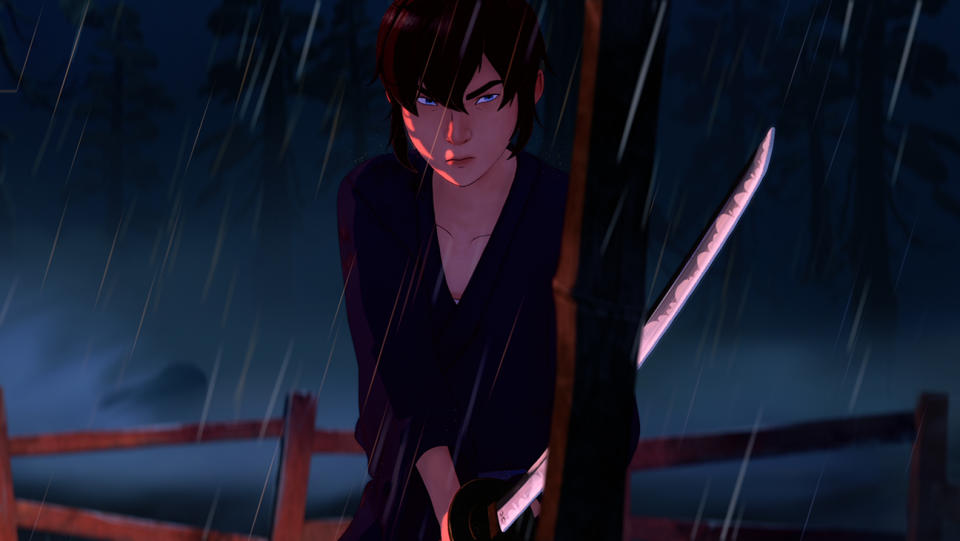
The series has already been celebrated for its handling of mature themes; its art styling’s animation, bunraku and live-action influences; and a cinematic look and sound that bolster its fight sequences and environments. That’s in addition to an A-list cast of Asian and Asian American voice actors, which includes George Takei, Ming-Na Wen, Stephanie Hsu, Masi Oka, Cary-Hiroyuki Tagawa, Brenda Song, Darren Barnet, Randall Park, Harry Shum Jr. and Mark Dacascos.
Yet, it’s the animated series’ complex narrative about identity — and the feelings of love, betrayal and rage that can accompany that — that elevates it beyond other adult animated titles.
The Hollywood Reporter spoke to Noizumi and Green about crafting Mizu’s identity, from her race to her gender, as well as how the show’s setting, art styling, music and more help the series explore identity in a way that is, according to Noizumi, unlike “anything anybody’s ever seen.”
With this being partly inspired by your own life, Amber, how did you want to take your experiences as a multiracial person and explore that in this series? What did you want to unpack?
Noizumi: It’s actually hard to talk about today because you always want to roll with it, with people around you — the little jokes that people make from childhood until now. Those paper cuts that just kind of tear at you over time. So I wanted to explore feeling in between two worlds, but the only world I knew was the world in which I tried to assimilate with mostly white people. So what would it have been like to try to assimilate with mostly Japanese people? In a time when it was so homogeneous, especially — though it’s still pretty homogeneous in Japan. What would it have been like ultimately to go on this fantasy journey of what it might have been and to find the catharsis in there? The show isn’t so didactic. It’s a fun experience, but it’s also taking those feelings and expounding on them to insane limits. I never have those actual thoughts of cutting people down like Mizu, but it’s taking those seedlings and letting them grow on the page and on the screen.
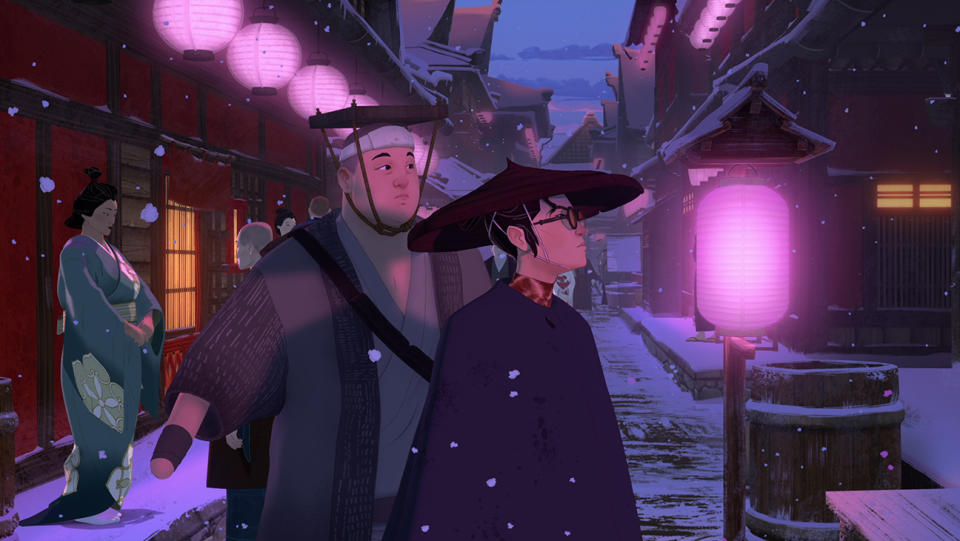
You’ve previously spoken about setting this in 17th century Japan, but how did that specific period lend itself to what you were just speaking to?
Noizumi: What’s interesting about that era is that it was in 1633 that Japan closed its borders completely, saying no outside influence. It’s still heralded to this day as the “golden age of Japan.” I found it very interesting that what they call their golden age was when it was the most homogeneous. It’s kind of like people here maybe saying “the good old days,” when it was more white in America. So that was just an interesting time, and obviously, there’s a lot of beauty and historical elements that were captivating to write a story about. But I think the fact that it was the golden age — and that it wouldn’t have been a golden age for somebody who looked different — was really the main element that we wanted to explore.
Mizu’s gender is initially obscured, leading to the idea that Mizu might be nonbinary. But you ultimately reveal she’s a woman who is navigating a man’s world, which is its own journey. Why did you want this story to center the experiences of a woman during this time, versus just even going with a male lead?
Noizumi: I think mainly because I’m a woman, and I was imagining what it would be like for me there. I guess it was also just giving her a second otherness, that it wasn’t just her having to deal with her race. It was somebody who had to overcome two challenges. She had to be so driven and so focused, and we can really see that she didn’t just take it lying down. She had to really rise up.
Green: To have a character like that who lives in a time, who wouldn’t necessarily have a vocabulary to consider her gender, it’s been really heartening and interesting hearing people see the show now thinking about what Mizu might identify as. Referring to Mizu as she or they — that’s amazing. We made sure in the first episode, when people were reading it, that it was a misleading read. We said her gender was Mizu. We threw in a they or two because we wanted the experience of the reader to be a surprise at the end that they never saw that coming. The reader would have to contend with their own presumption, that, “Well, clearly anyone who’s this badass must be a guy.” While the view of the first episode doesn’t really give that same experience, I think that was one of the reasons people found it a story worth reading. They had to contend with their own misperception, perhaps, in the read because they didn’t know she was a woman until the last page.
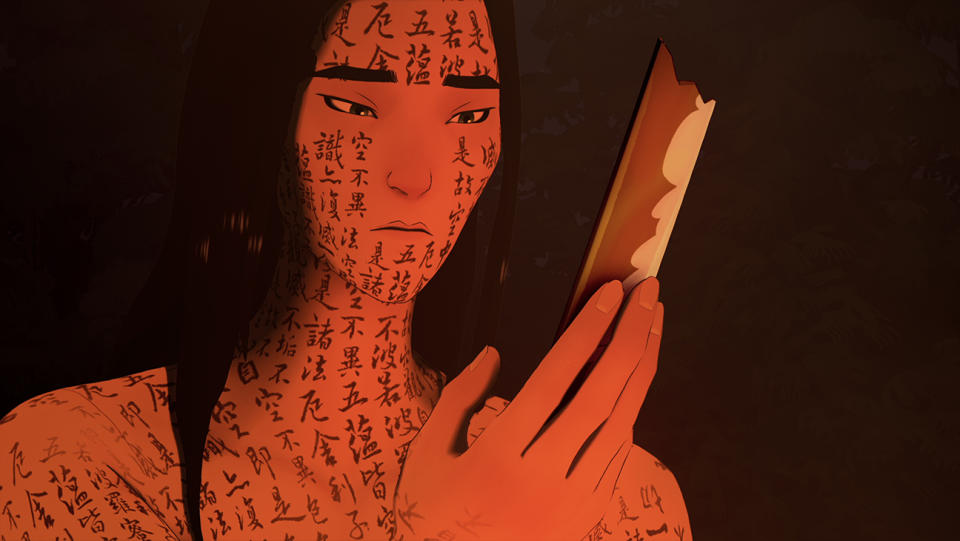
This is neither anime nor animation, but has a live-action twinge and puppeteering elements that create something new within the larger spectrum of Western and Eastern approaches. Why was this styling the way to go, and what did you want it to say with it about your characters and world?
Noizumi: With Blue Eye Samurai, we wanted it to just break all of the boxes. Mizu isn’t Japanese or white, she’s not female or a male, and this show is not like anything anybody’s ever seen. It’s not a cartoon, it’s not anime and it’s not live action.
Green: We are here in California — we are in the West — and we’re going to be doing something that had elements of East meets West. So the animation style had to do that, too. Anime, it’s done so well by those who do it, but we really just came out of conversations with all of our partners — from Netflix being interested in doing something hopefully groundbreaking and Jane Wu, our supervising director who comes from an animation background — going, “I think I know how we can do this in a way that will be different and surprising.” Then it was just inviting the artists who were excited to do that.
It just kept asserting itself. There were tuning fork images that we just said, “Let’s not move away from that. Make it look like the concept art,” instead of that inevitable disappointment so many times when you look at concept art in the finished thing. Why would you want to let go of that? We wanted to maintain the brushstroke the artists take. The word bespoke came up a lot. And there’s no element of this show that isn’t. Ten days from launch and everyone [was] assiduously editing the subtitles on the screen to make sure that even that is bespoke.
The music and sound work on this show are phenomenal — they speak both to the cultural and historical specificity of this story but also give it a real cinematic feel. Can you talk about navigating that with your composer and sound team?
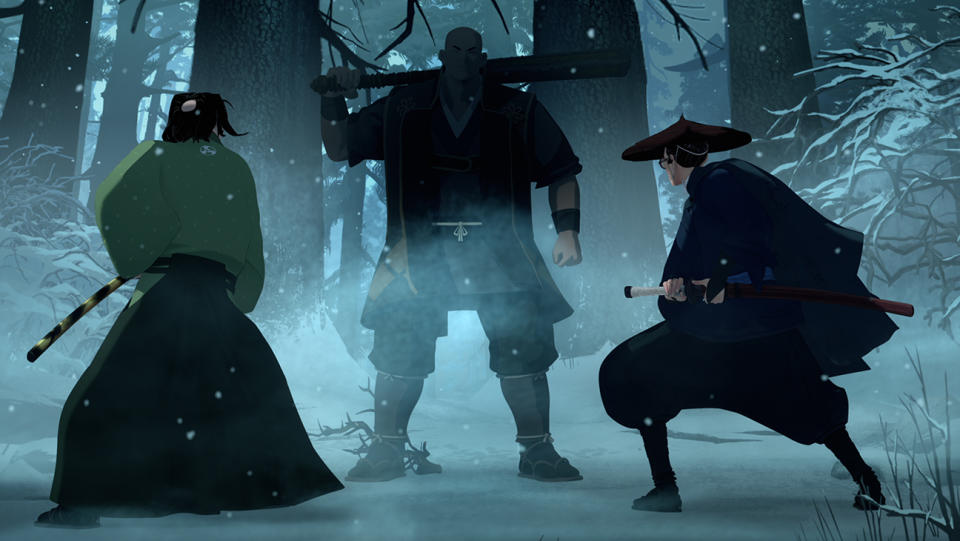
Noizumi: With the music, we had a lot of discussions about how we were going to accomplish it sounding somewhat period specific, but we knew we were never going to nail the historical accuracy of what music would have sounded like. Even if we did, it may not be pleasing to modern-day ears. So we sort of threw out some nouns with [composer] Amie Doherty, and she laughed and was like, “Boom.”
Green: She came back with a suite of material.
Noizumi: It was like, “All right, I guess we know what we’re doing here.” (Laughs.)
Green: The first time we hit play, it was a full suite that was the Mizu theme into the Akemi theme into battle themes. It was breathtaking because we could feel the show. We’d seen it by that point, but we hadn’t felt it. One of the best-kept secrets in television is that showrunners talk to each other, and I remember we were listening to the Undone soundtrack that Amie had composed when we were writing this. We threw an email to the creators of Undone — Kate Purdy and Raphael Bob-Waksberg — and just said, “Hey, Amie Doherty!” One of the best emails back we ever got was, “Hire immediately. Call for details.” She was wonderful to work with, and the show just became an emotional experience once Amie made it work. Her soundtrack is an hour and 24 minutes of her selects, and Emi Meyer’s voice work on “For Whom the Bell Tolls,” the Metallica song, will be on there, too. If enough people listen to it, we can imagine adding to that so that Spotify grows into volumes.
Then for sound, we worked with sound mixers who just were incredible, who really came into this experientially — [sound designer and rerecording mixer] Paul N.J. Ottosson and [sound supervisor and rerecording mixer] Myron Nettinga. There isn’t a table big enough hold all the awards between them. But they were just as excited as anyone else and came at animation as if it was a huge feature and with a level of sophistication that we really learned a lot from. We told them our goals and then they exceeded them.
You’ve got a really incredible cast for this. Can you talk about getting them on board, especially Maya Erskine as your lead? Did you have woo any of them, considering so many work heavily in live-action?
Noizumi: I don’t think we had to woo any of them. Most people, we had them in mind for their characters. We were casting early in the pandemic, and I mean, we weren’t lucky to be in the pandemic, but people weren’t on set. People weren’t working. People had more availability. I also think people were excited to be a part of something new and fresh, with so much Asian representation. Maya Erskine is an amazing actor, and we always had her in mind for the role. She just had the right cadence and brought the right sensibility. I adore her in PEN15. It’s semi-autobiographical, I assume, and you see a lot of the complicated feelings she deals with as a mixed-race person.
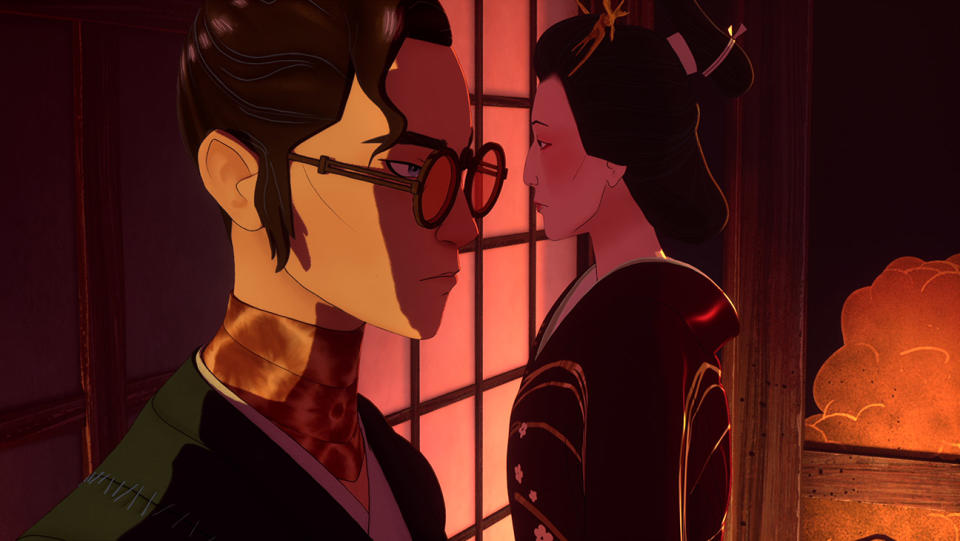
Green: We had a pretty easy time. We offered roles, people said yes. It was really touching. Margery Simkin and Orly Sitowitz, our casting directors — we worked with them before and they’re amazing — would bring ideas, we would put ideas forward. I remember when we get to episode four, we meet the character Madame Kaji, who is voiced by Ming-Na Wen. We thought, “Oh my God, let’s offer her the role. We’ll write her a letter,” and [the casting directors] said, “Oh, she already said yes.” (Laughs.) We were so touched and surprised. And were like, “But, but — we were going to have to woo!” And they’re like, “No, she liked it.” We were so honored. The level of geekery on our part when you’re talking to Ming-Na Wen or talking George Takei — people really wanted to show up for the George Takei sessions. There are a lot of screen grabs. He loved it. He was great.
Best of The Hollywood Reporter

 Yahoo News
Yahoo News 
